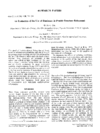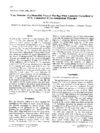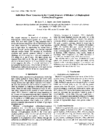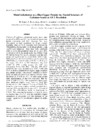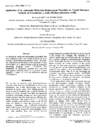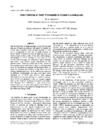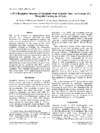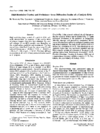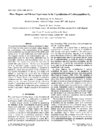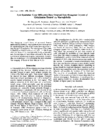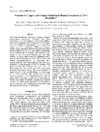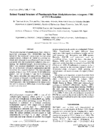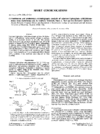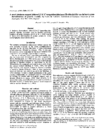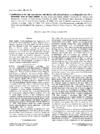issue contents
May 1994 issue
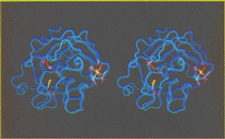
Cover illustration: The overall folding of the salmon trypsin molecule. Courtesy of A. O. Smalas and A Hordvik.
research papers
Comparison of different X-ray refinement procedures suggests that the inclusion of information about known main- and side-chain conformations gives improved results
The structure of monoclinic hen egg-white lysozyme crystallized at 313 K was determined at 1.72 Å resolution. The conformations of the two independent molecules differ in the regions of residues 45-50, 65-73 and 100-104.
PDB reference: 1lys
When RuBisCO crystals are transferred from a high-salt low-pH mother liquor to conditions of low salt and high pH, they contract 24 Å along the c axis and shrink 14% in volume. Changes in the protein structure are relatively small.
PDB reference: 1rld
A high-resolution structure analysis of the protein azurin, with cadmium substituted for the native copper, shows that the overall structure is unchanged except for minor alterations to the metal coordination.
PDB reference: 1aiz
The crystal structure of cytochrome c from Rhodopseudomonas viridis has been solved by an automatic molecular-replacement procedure and refined to an R value of 0.219 for diffraction data at 3 Å resolution.
PDB reference: 1cry
Protein crystallographic data, collected using 0.92 and 0.55 Å X-rays, are compared. No significant differences in data quality or signal-to-background ratio were found.
The structure displays the familiar myoglobin fold; however, the D helix is replaced by a well ordered random coil. This feature may be correlated with observed dioxygen affinity and dissociation.
PDB reference: 1myt
High-resolution single crystals of a catalytic RNA molecule have been obtained. The space group is P1 and the crystals diffract to a resolution of 2.4 Å.
A new method for uncoupling nucleation and growth, and therefore growing protein crystals in the advantageous metastable zone of the phase diagram, is described. It consists of diluting microbatch crystallization droplets directly, some time after their setup.
α-Macroglobulin is a protease scavenger found in blood plasma which entraps 1-2 protease molecules for later removal from blood by receptor-mediated endocytosis in the liver. Data to a resolution of 10 Å have been obtained using synchrotron radiation at cryogenic temperature.
A high-resolution crystal structure analysis of copper- and oxalate-substituted human lactoferrin has shown how the protein accommodates different bound cations and anions by small internal adjustments.
PDB reference: 1lcf
The crystal structure of pseudoazurin from Methylobacterium extorquens AM1 has been solved by the molecular replacement method and refined at 1.5 Å resolution.
PDB reference: 1pmy
short communications
Galactose-1-phosphate uridylyltransferase, an enzyme critical in sugar metabolism, has been crystallized. Preliminary crystallographic results are presented as well as methods of protein purification and crystallization.
A platinum chromophore proves to be a useful reagent in heavy-atom derivatization of protein crystals.
Low-salt crystals are more suitable for ligand-binding studies, and thus investigations of the catalytic mechanism.


 journal menu
journal menu









